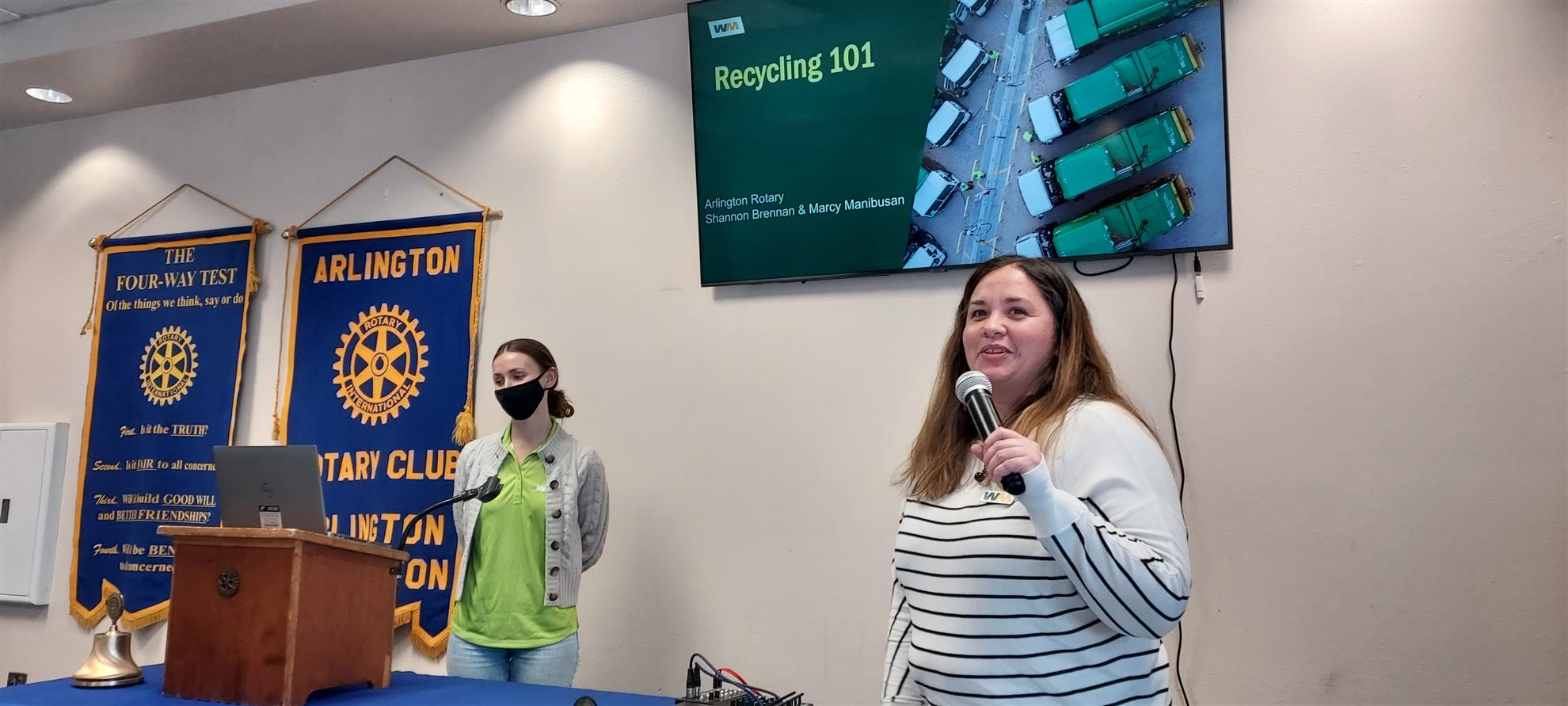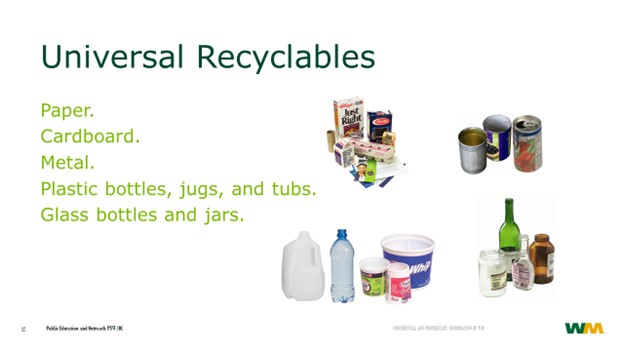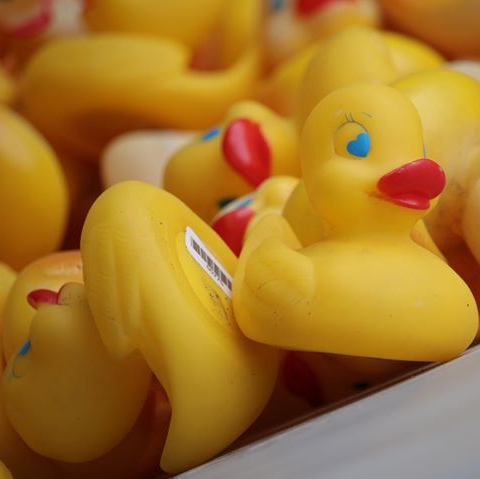What Goes Into the Blue Bin?
Recycling 101
What goes into the blue recycling can before you roll it out to the curb?

Shannon Brennan Speaking with Marcy Maribusan
This question was answered by Shannon Brennan, a member of the Waste Management Public Education & Outreach Team, who was the meeting speaker, introduced by Jim Kelly along with Marcy Maribusan, who works with the City of Arlington in its garbage and recycling services.
Being Green is the goal of recycling. Anything that goes into our gray garbage cans ends up in the landfill, where it can take decades to break down.
Organic materials can be composted to enrich the soil, so that is one way we can be greener.
Waste Management has a Single Stream Recycling process, which means that glass, paper, metal and plastic can all go into the same dumpster because it gets sorted at the recycling center. Since customers no longer have to sort glass, metal and paper separately, recycling has increased 40%.

Please, no plastic bags! They are the top problem item because they wrap around the conveyor belt sorters and bring them to a halt.
And knowing how beneficial recycling is you have to wonder why can’t there be even more on that list??
There are actually three ways curbside recyclability is determined.
- Is this material physically be turned into something new? Paper towels is an example of something that is physically difficult to be recycled and turned into something new because the fibers are too short.
- Can it be sorted practically? Even if an item is made of recyclable material if there isn’t a way to separate the different kind of recyclable material within it.
- Is there a market for it? Need someone who wants to buy it? Materials needs to be able to be turned into something new.
Some exceptions that can’t be recycled:
- No plastic bags, please. They gum up the recycling machinery. They can be recycled at grocery stores and some hardware stores.
- Don’t bag recyclables. Put them in the bin loose.
- No shredded paper.
- No frozen food packaging, as it is plastic coated, as are disposable coffee cups.
- No Styrofoam
- No red plastic cups
- No pill bottles
- No plastic utensils
- No plastic planters
- No K Cups unless the lids and coffee grounds have been removed
- No garden hoses
- No chip bags
- No condiment packets
- No coat hangers, metal bottle caps, scissors or chemical spray cans
The Recycling Loop to go greener includes collection and processing, manufacturing and encouraging purchases of recycled products.



